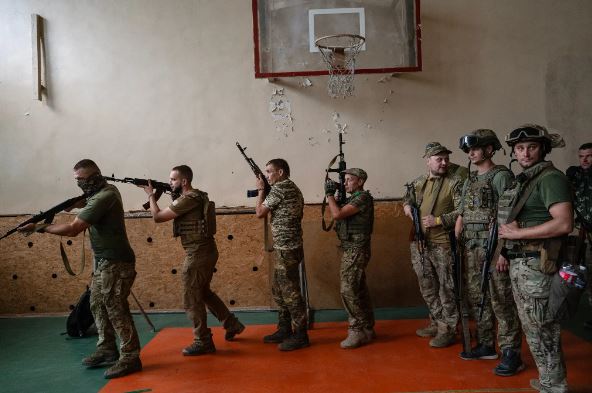Throughout the conflict in Ukraine, President Volodymyr Zelensky persistently sought a specific weapon: long-range missiles known as ATACMS, capable of reaching Russian air bases and troops over 100 miles into Ukrainian territory.
For nearly 18 months, President Biden consistently responded with a resolute “no,” both publicly and in private meetings with President Zelensky. The rationale behind this refusal was rooted in concerns that such weapons could cross President Vladimir Putin’s “red lines,” especially given Mr. Putin’s sporadic threats of employing tactical nuclear weapons.
However, this stance shifted recently, leading to a momentous decision. Following explosions at two air bases situated in Russian-held regions of southern and eastern Ukraine, evidence emerged that the bases had been hit by American-supplied ATACMS (Army Tactical Missile Systems) – the final piece of weaponry requested by President Zelensky.
The narrative behind this change of heart, as explained by multiple administration officials, is more intricate than the simplistic portrayal in Washington, characterizing President Biden as overly cautious, responding only when under overwhelming pressure.
President Zelensky’s push for ATACMS also gained momentum during the NATO summit held in Vilnius in July. There, he openly expressed his frustration with President Biden and German Chancellor Olaf Scholz, who had both resisted issuing a clear statement regarding Ukraine’s path to NATO membership.
White House officials stress that their administration diligently reviews weaponry to ensure it aligns with Ukraine’s requirements. By July, they recognized a “clear use case” for ATACMS, specifically targeting supply lines and air bases that Ukraine could not access. On July 14, during a meeting in Jake Sullivan’s office, the president’s national security adviser, officials discussed the development of options, spearheaded by Sullivan and Jon Finer, his primary deputy.
This issue underscored the divisions within the Biden administration. Secretary of State Antony J. Blinken advocated for providing more substantial and swifter arms support to Ukraine, expressing concerns that the United States appeared hesitant and reactive. Meanwhile, Defense Secretary Lloyd J. Austin III argued against supplying ATACMS to Ukraine, as the U.S. had a limited supply of these missiles. Distributing them to the Ukrainians, who were depleting ammunition rapidly, could jeopardize American and allied interests. Cost considerations also played a part, as ATACMS were priced at around $1.5 million each.
By September, Sullivan and Finer’s group returned with an analysis and proposal. Escalation seemed less significant, particularly after Britain began supplying its Storm Shadow missiles, which approached the range of ATACMS, and Putin responded with minimal objection.
The focus was on Russian helicopters and other aircraft concentrated in occupied territories, typically at airports. In discussions, Mr. Austin conceded that the ATACMS version being considered had a 100-mile range and carried cluster munitions designed to inflict maximum damage on unprotected targets like aircraft.
Cluster munitions, while not ratified by the United States, are banned by an international convention due to the risk they pose to civilians, particularly children. The United States’ previous supply of different cluster munitions to Ukraine had elicited widespread condemnation in July.
The ATACMS proposal garnered support from various administration officials, ultimately gaining President Biden’s approval. The decision was conveyed to President Zelensky during their meeting in Washington last month, though both leaders agreed to withhold the announcement.
Nevertheless, the information leaked, though the timing of the shipments remained undisclosed, a strategic move aimed at taking the Russians off guard before they had an opportunity to move their helicopters out of ATACMS range. This strategic approach seemingly materialized during Tuesday’s air base strikes.

